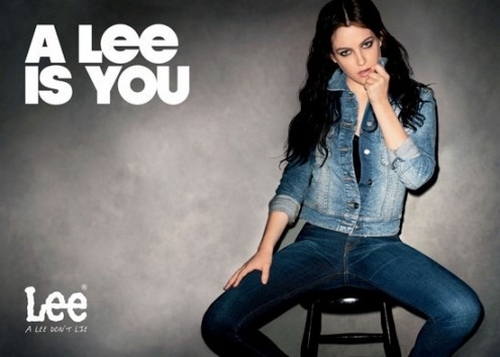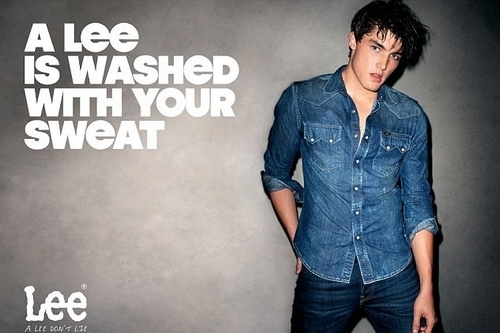Lee is owned by VF Corporation which is one of the largest apparel company in the world. Lee is an American brand of denim jeans. The company was found by Henry David Lee, the growth of Lee was driven by Union-All work jumpsuit in 1913.
By 1940s it became the leading manufacturer for work clothes in the US. In 1970s Lee started catering to fashion cycles and shifted its focus from workwear. From the year 2005, their Jeans have been manufactured by Arvind Mills in Chamrajnagar, India which is the world’s largest denim manufacturer.
Table of Contents
Strengths in the SWOT Analysis of LEE
1) Brand image
Every piece of clothing has 100 years of Legacy engrained in it. The past 100 years have proven that Lee listens to its customers and will always focus on improving. The heritage that the brand has makes the brand really trustworthy.
The pieces of denim have been loved for decades and the brand has loyal customers who can swear on the quality of the brand’s merchandises. In India, the brand has been voted as the most trusted clothing year after year.
2) Innovation throughout the century.
The brand has been innovating its way through the century. They developed the Dream Jean, which feels like Yoga pants and is patented under the brand’s name. Lee also introduced the “Extreme Motion Jeans” which features all over stretch and was very popular.
Lee has developed jeans that use 2D designs to create 3D effects and has applied the contouring concept of makeup into Jean, using laser applied finishes to create lighting gradients to shape and flatter the body. The company has always been forefront in capturing customers need and innovating products accordingly.
3) Successful Marketing Strategies
Latest marketing campaigns like “Don’t just move. Move your Lee” has been successful in representing how clothes can empower everyday moves. It has positioned itself to be an effortless style that helps customers be true to themselves.
The brand tries to stay relevant as the products. It has also come up with the concept of Lee Man and Lee Woman who are seen wearing Lee apparels while being active in a number of ways. The Lee Woman is “lean mean and covered in jean” and the Lee Man like to have fun and loves to wear his “freedom pants”.
4) Socially responsible
The brand has launched the “World Denim Day” where the brand invites workers and companies to wear Lee denim and in return, a contribution of 5$ and that is donated for the breast cancer. The Asia Lee has developed a product line called Rethink that has achieved 30% savings in energy, 44% savings in water and 28% savings in carbon emissions.
The brand understands that linear system of production is not sustainable for the future and the brand has a design strategy that implements cyclability, increased volume for garments, resale of used garments and using recycled textile fibers.
Weaknesses in the SWOT Analysis of LEE
1) Competition
Brands like Levis, Diesel, and Wrangler are Lee’s main competitors. All of these brands are seeking the attention of the millennial customer. Lee and Wrangler are the most popular among the 50+ demographics and are the least popular among the millennial consumers.
The emergence of brands like Zara, H&M has made the competition even tougher for Lee. Levis which had a virtual monopoly among the young customer is also facing strong competition. Levis has done good job marketing to the younger customers, because of a lack of advertising support for VF, it is said that Wrangler and Lee have diluted their personality.
2) Decreasing Denim Quality
Quality is the main factor that satisfies the customer by either meeting the expectation or exceeding the expectation. The competition is high, and this had brought new jeans offerings to customers at a mass-market price. The brand normally licenses the manufacturing and marketing of the apparels under the brand name which does not ensure consistent quality of the jeans.
Opportunities in the SWOT Analysis of LEE
1) Expand for more
The brand can target and expand its production into shirts, t-shirts on a larger scale. After identification of the countries where the sale is more, the brand can play on its strength by growing on its most profitable core and expand for more. Lee has the number of potential products which are undeveloped and push more of the logo t-shirts, denim jackets etc. Lee needs to grow as a more diversified brand and needs to make strategic choices to do so.
2) Emerging markets
The emerging economies are India, Brazil, UAE, South Africa, and Singapore who are very much influenced by the western culture. The increased income levels and also growing the popularity of the American brands has made Asia a good Market for the brand.
In India, the denim market is expected to grow at CAGR of 14.5% by 2021. The global denim market is forecasted to witness CAGR of 5.8% during 2018-2023 and much of it is led by the demand in the emerging economies. The growing global e-commerce industry and the changing Asian retail clothing industry buoyed the denim market. The growing trend of westernization, increasing purchasing power and rising number of net worth individuals (HNWI), the denim market is expected to grow.
Threats in the SWOT Analysis of LEE
1) Reduced markets for Jeans
Customers look for greater comfort and convenience and thus the trends are shifting from jeans to leggings and track pants. The sale the iconic blue denim has been falling after decades of good growth. The “athleisure” trend is the biggest threats because of the changing of the fundamental lifestyle trends. Jeans are the attire people choose to wear everywhere anymore.
The parent company VF Corp business shares fell 9% in Oct 2018 due to its fading jeans business and have announced that it will offload its denim division into the publicly traded company and put the entire focus on “activity-based, lifestyle brands”.
2) Sustainability threats
The environment disruption has caused the price of cotton to increase by more than 2000 percent. Stricter regulations are coming up in the use of freshwater as well, the rise in the sea level has displaced the number of garment manufacturers in Asia. The treatment and dyeing process requires the huge amount of water, just to make a pair of jeans and a t-shirt requires 20,000 liters according to WWF. According to Mckinsey’s, profitability of these companies are at risk by at least 3% if they don’t act determinedly soon.
Liked this post? Check out the complete series on SWOT

